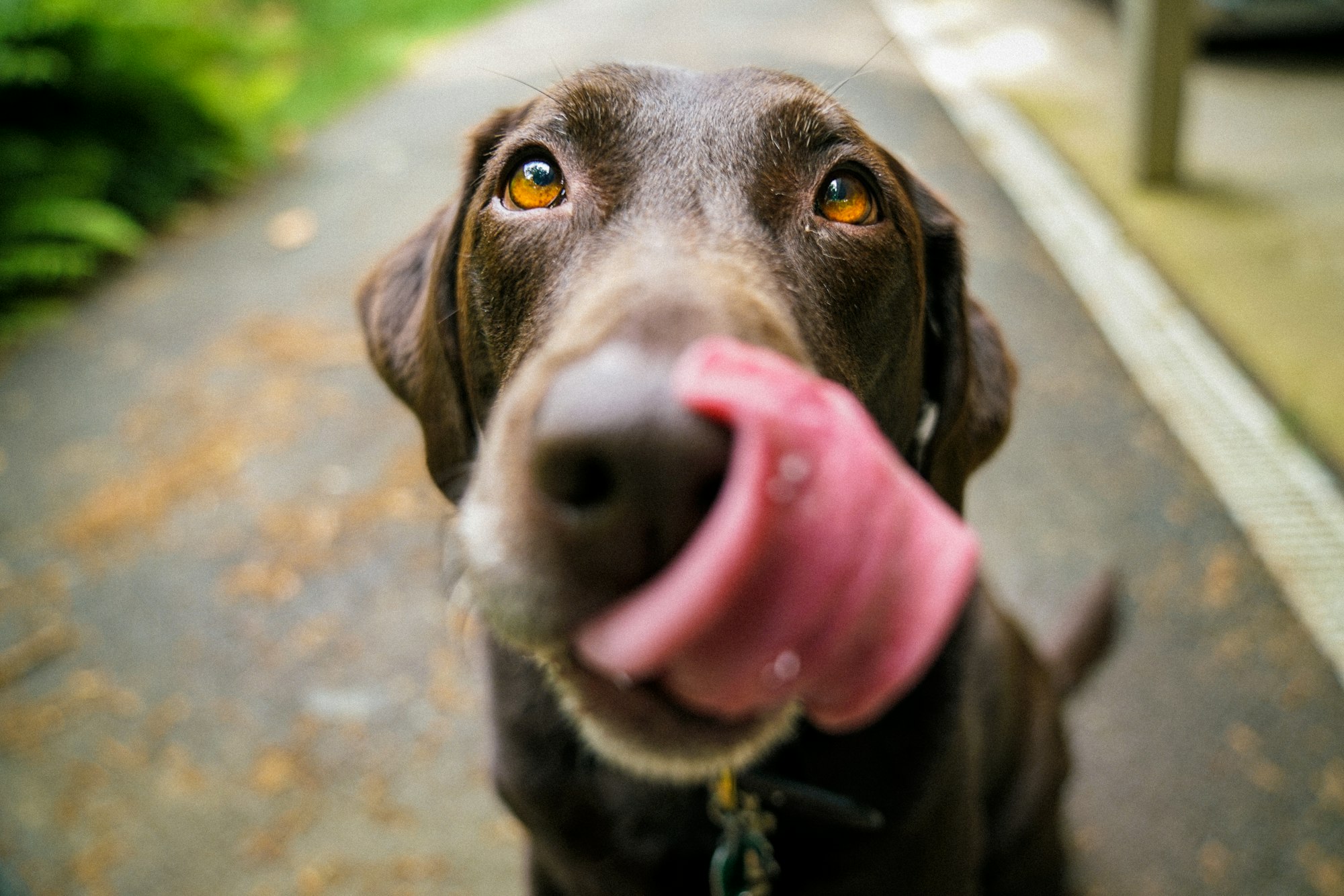Black dog nails can be challenging to trim due to their dark color, which can make it difficult to see the quick, the part of the nail that contains blood vessels and nerves. However, regular nail trimming is essential for a dog's health and well-being, as long nails can cause discomfort, pain, and even lead to infections.
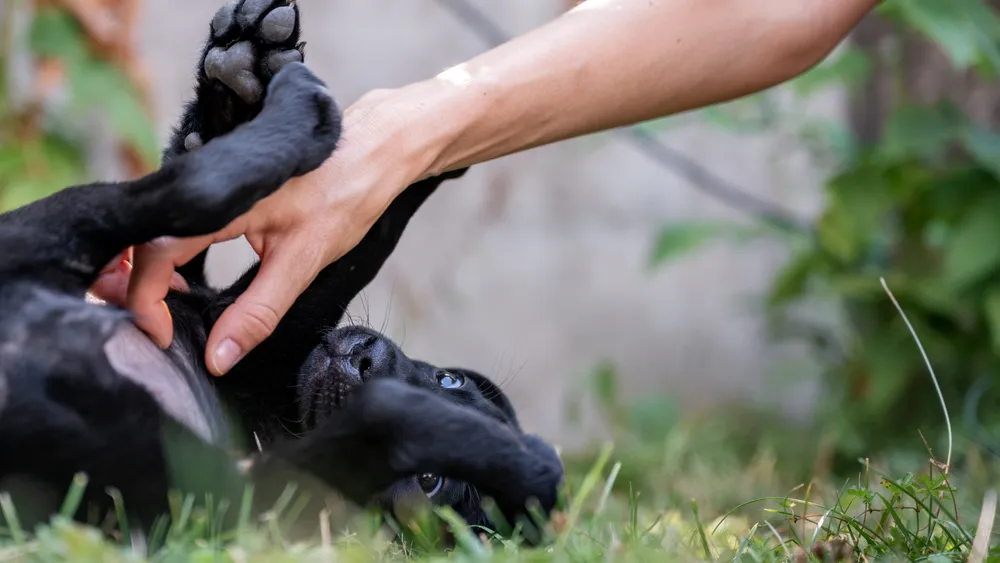
To cut black dog nails safely and effectively, it's essential to have the right tools and techniques. One of the most important tools is a good pair of nail clippers designed for dogs, as human nail clippers can be too small and cause the nail to split or break. Additionally, having styptic powder or cornstarch on hand can help stop bleeding in case the quick is accidentally cut.
When trimming black dog nails, it's important to start slowly and carefully. Begin by cutting a small amount of the nail at a time, making sure to avoid the quick. If the nail is too long, it may be necessary to trim it in several sessions to avoid cutting the quick. With patience and practice, anyone can learn how to cut black dog nails like a pro.
Understanding Black Dog Nails
Anatomy of a Dog's Nail
Before attempting to cut a dog's nails, it's important to understand the anatomy of the nail. A dog's nail consists of several parts, including the nail bed, the nail plate, and the quick. The quick is the pink area of the nail that contains blood vessels and nerves. It's important to avoid cutting the quick when trimming a dog's nails, as it can cause pain and bleeding.
In addition to the quick, there is also a pulp inside the nail that provides support and cushioning. This pulp can be more pronounced in black nails, making it difficult to see where the quick begins.
Why Black Nails Are Challenging
Black nails can be particularly challenging to cut, as it's harder to see where the quick begins. This can make it difficult to avoid cutting the quick, which can be painful for the dog and cause bleeding.
To avoid cutting the quick, it's important to take small, gradual cuts and to use a sharp pair of nail clippers. It's also helpful to have styptic powder on hand in case of bleeding.
Overall, cutting a dog's nails can be a challenging task, but with a good understanding of nail anatomy and a steady hand, it can be done safely and effectively.
Preparing for Trimming
Before attempting to trim your black dog's nails, it is important to gather the necessary equipment and acclimate your dog to the process.
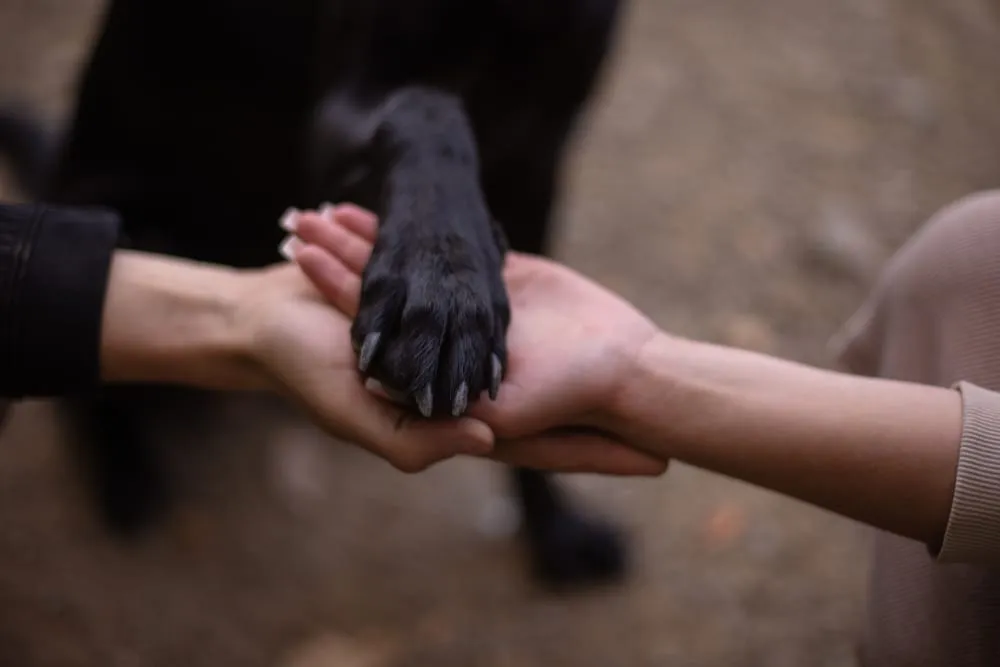
Gathering Necessary Equipment
To trim your black dog's nails, you will need a few key pieces of equipment. These include:
- Nail clippers: Choose a pair of clippers that are appropriate for your dog's size and nail thickness. Guillotine-style clippers are a popular choice for black dogs.
- Dremel or nail grinder: If you prefer a more gradual approach to trimming your dog's nails, a Dremel or nail grinder may be a good option. These tools allow you to file down your dog's nails gradually.
- Styptic powder: In case you accidentally cut your dog's quick (the blood vessel inside the nail), styptic powder will help stop the bleeding.
- Treats: Positive reinforcement is key to making the nail trimming process a positive experience for your black dog. Have plenty of treats on hand to reward good behavior.
Acclimating Your Dog
Many black dogs are nervous or anxious about having their nails trimmed. To help your dog feel more comfortable with the process, it is important to acclimate them to it gradually. Some tips for acclimating your black dog include:
- Touching their paws: Start by touching your dog's paws and nails without actually trimming them. This will help your dog get used to having their paws handled.
- Building confidence: Gradually work up to actually trimming your dog's nails. Start by trimming just one nail at a time, and be sure to reward good behavior with plenty of treats and praise.
- Practicing patience: It may take some time for your black dog to feel comfortable with the nail trimming process. Be patient and don't rush the process.
By gathering the necessary equipment and acclimating your black dog to the nail trimming process, you can help ensure a positive experience for both you and your furry friend.
Trimming Techniques
Trimming a black dog's nails can be a challenging task, especially if the quick is not visible. However, with the right technique and tools, it can be done safely and effectively. Here are some trimming techniques to help you get started:
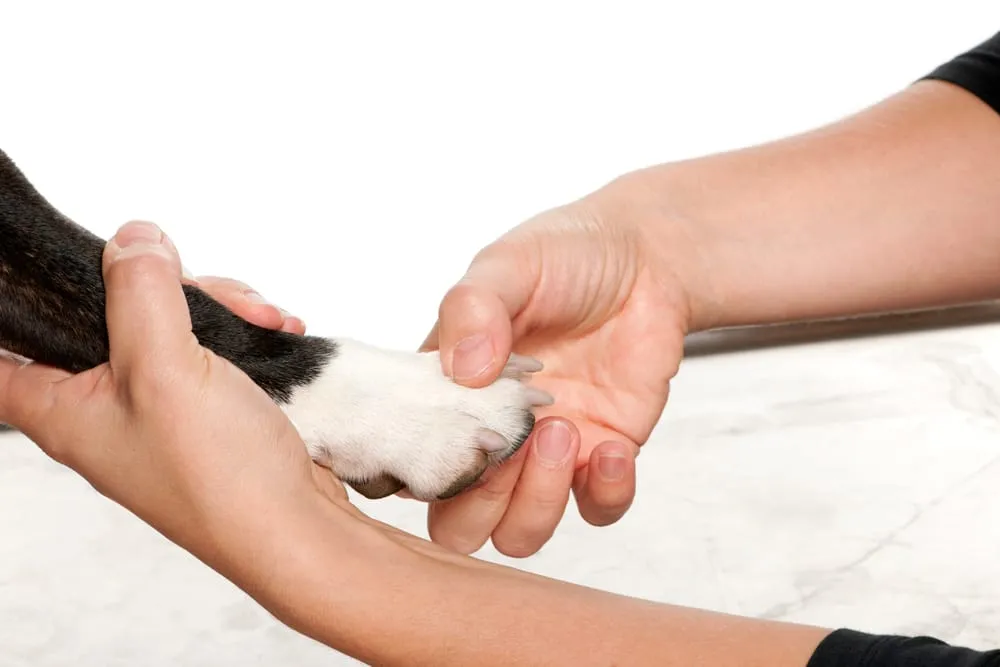
Identifying the Quick on Black Nails
Before trimming your dog's nails, it's essential to identify the quick. The quick is the blood vessel and nerve that runs through the center of the nail. Cutting the quick can cause bleeding and pain to your dog. In black nails, the quick is not visible, making it harder to determine where to cut. However, you can use a flashlight to visualize the quick. Shine the light on the nail, and you will see a small pinkish area. That's where the quick ends. It's crucial to cut the nail before the quick to avoid injuring your dog.
Cutting Technique and Angle
There are two primary types of nail trimmers: scissor-style trimmers and guillotine-style trimmers. Scissor-style trimmers work well for small dogs, while guillotine-style trimmers are better for larger dogs. When using either type of trimmer, it's important to cut at a 45-degree angle. Cutting straight across can cause the nail to split. Cutting at a 45-degree angle will also help you avoid cutting the quick.
Using a Nail Grinder
If your dog is afraid of nail clippers, you can use a nail grinder instead. A nail grinder is a tool that files down the nail instead of cutting it. It's a great option for dogs with thick nails or if you're afraid of cutting the quick. When using a nail grinder, start with a low speed and gradually increase it. Hold the grinder against the nail at a 45-degree angle and move it in a circular motion.
In conclusion, trimming black dog nails can be a daunting task, but with the right technique and tools, it can be done safely and effectively. Always remember to identify the quick, cut at a 45-degree angle, and consider using a nail grinder if your dog is afraid of clippers.
Handling Accidents
Cutting a black dog's nails can be a tricky task, and accidents can happen even to the most experienced dog owners. It's important to know how to handle accidents to prevent further harm to your furry friend.
What to Do If You Cut the Quick
The quick is the pink area in the dog's nail that contains blood vessels and nerves. Cutting the quick can cause bleeding and pain to your dog. If you accidentally cut the quick, don't panic. Apply pressure to the nail using a clean cloth or gauze to stop the bleeding.
If the bleeding doesn't stop after a few minutes, you can use styptic powder to help clot the blood. Dip the bleeding nail into the powder or use a cotton swab to apply the powder to the nail.
It's important to keep your dog calm during this process. If your dog is in pain or anxious, try to distract them with treats or toys.
Preventing and Treating Bleeding
To prevent bleeding, it's important to cut the nail at a 45-degree angle and avoid cutting too close to the quick. If you're unsure where the quick is, use a flashlight to shine through the nail and locate the pink area.
If bleeding does occur, apply pressure to the nail and use styptic powder to help clot the blood. If the bleeding persists or your dog is in pain, seek veterinary attention.
Remember, accidents can happen even to the most experienced dog owners. It's important to stay calm and know how to handle accidents to prevent further harm to your furry friend.
Aftercare and Maintenance
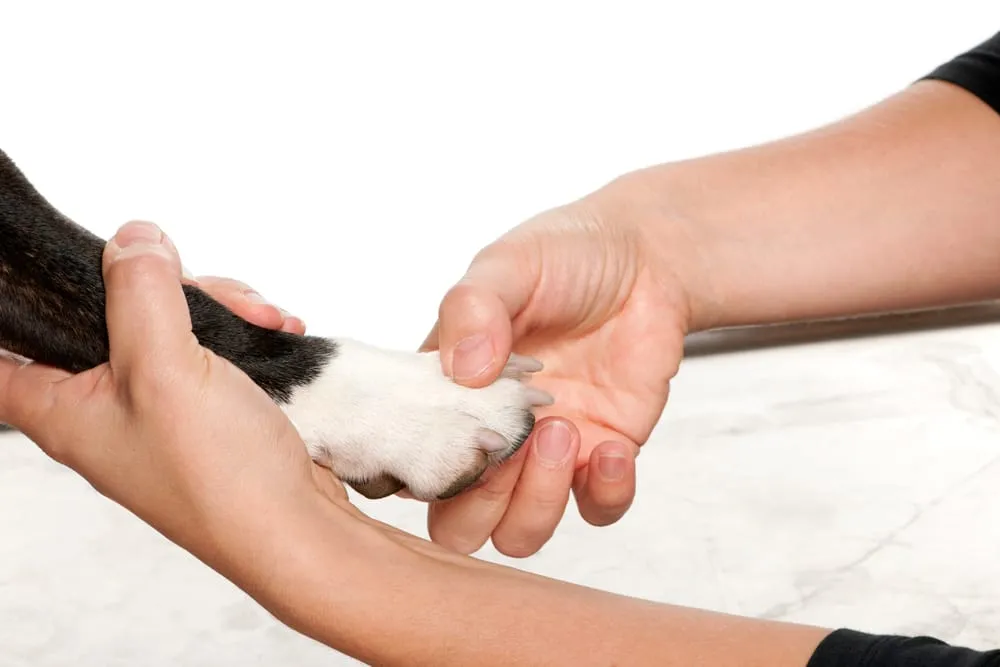
Post-Trimming Care
After trimming your black dog's nails, it is important to take some post-trimming care measures to ensure their comfort and safety. Firstly, you should check for any bleeding or discomfort. If you notice any bleeding, apply some styptic powder to the affected area to stop the bleeding. You can also use cornstarch or baking soda as an alternative if you don't have styptic powder.
Secondly, you should check for any signs of infection. If you notice any redness, swelling, or discharge, contact your veterinarian immediately. They may prescribe antibiotics or other medication to treat the infection.
Lastly, you should reward your dog for their cooperation during the trimming process. Give them a treat or some extra attention to reinforce positive behavior.
Regular Maintenance Schedule
To prevent long nails from receding into the paw pad or causing clicking sounds when walking on hard surfaces, it is important to establish a regular maintenance schedule for trimming your black dog's nails. The frequency of nail trimming depends on the dog's activity level, nail growth rate, and the surface they walk on.
As a general rule of thumb, you should trim your black dog's nails every 4-6 weeks. However, if your dog is very active and frequently walks on hard surfaces like concrete or asphalt, you may need to trim their nails more often.
When trimming their nails, make sure to use proper dog grooming tools like nail clippers or a Dremel tool. Avoid cutting the quick, which is the pink part of the nail that contains blood vessels and nerves. If you accidentally cut the quick, apply styptic powder or cornstarch to stop the bleeding.
Regular maintenance of your black dog's nails not only keeps them comfortable and prevents clicking sounds, but it also prevents long nails from getting caught in grass or other objects during outdoor activities.
Professional Help and Advice
When it comes to cutting black dog nails, seeking professional help and advice can be a great option for many pet owners. Professional groomers and veterinarians have the experience and expertise to handle the task safely and effectively.
When to Seek Professional Grooming
For puppies or dogs that are stressed or anxious during nail trimming, it may be best to seek the help of a professional dog groomer. They can provide a calming and safe environment for the dog, and use their expertise to trim the nails without causing any harm.
Additionally, for dogs with dewclaws or other nail abnormalities, a professional groomer can provide the necessary care and attention to ensure that the nails are trimmed properly and safely.
Consulting with a Veterinarian
For dogs with medical conditions or injuries, it is important to consult with a veterinarian before attempting to trim their nails. A veterinarian can provide advice on the best way to trim the nails safely and may be able to provide sedation or other medications to help calm the dog during the process.
It is also important to consider safety when trimming black dog nails. If you are unsure about how to properly trim the nails, seeking the advice of a professional can help prevent accidents or injuries to both you and your dog.
Overall, seeking professional help and advice can be a great option for pet owners who want to ensure that their dog's nails are trimmed safely and effectively. By working with a professional groomer or veterinarian, pet owners can have peace of mind knowing that their dog's nails are in good hands.
Additional Tips for Success
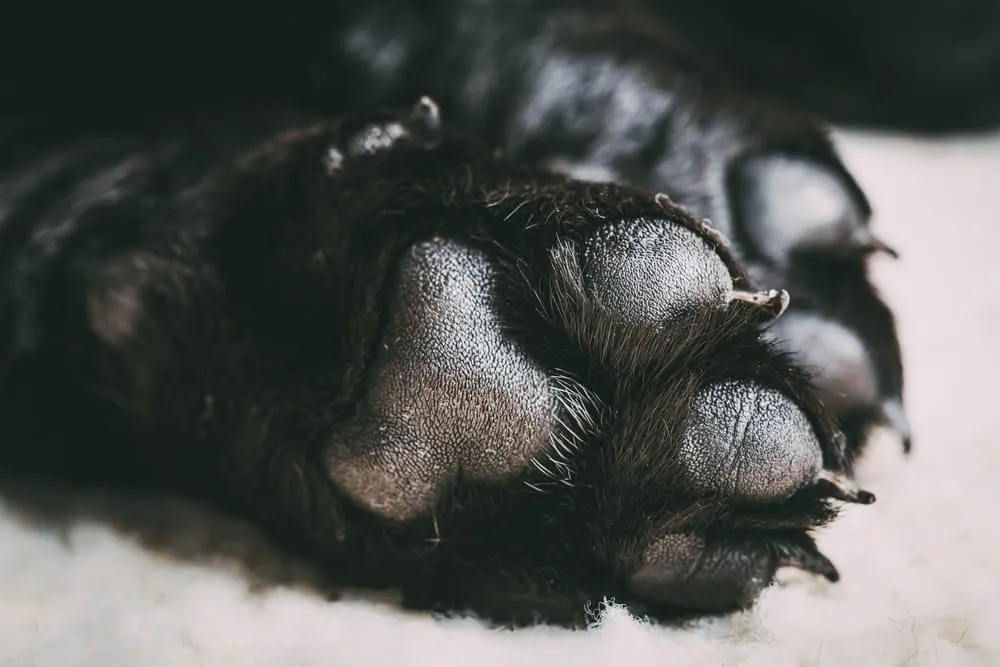
Creating a Positive Experience
Cutting black dog nails can be a stressful experience for both the dog and the owner. To create a positive experience for your dog, it is important to use positive reinforcement techniques. Offer your dog treats and praise throughout the process to help them associate nail trimming with good things.
It is also important to maintain a steady posture while trimming your dog's nails. Dogs can sense nervousness or tension in their owners, which can make them more anxious. By maintaining a calm and steady demeanor, you can help your dog feel more relaxed during the process.
Understanding Your Dog's Threshold
Every dog has a different threshold for nail trimming. Some dogs may be comfortable with having their nails trimmed, while others may become anxious or agitated. It is important to understand your dog's threshold and work within their comfort level.
If your dog is uncomfortable with having their nails trimmed, start by trimming just one or two nails at a time and gradually work up to more. You can also try using a nail file to gradually shorten the nails instead of cutting them all at once.
Guidelines for Cutting Black Dog Nails
When cutting black dog nails, it is important to be aware of the quick, which is the blood vessel that runs through the nail. Cutting the quick can be painful for your dog and can cause bleeding. To avoid cutting the quick, follow these guidelines:
- Use sharp nail clippers to make a clean cut
- Cut the nail at a slight angle, rather than straight across
- Look for the pinkish area near the base of the nail, which indicates the quick
- If you are unsure where the quick is located, make small cuts and stop when you see a black dot in the center of the nail
By following these guidelines and using positive reinforcement techniques, you can help your dog feel more comfortable during the nail trimming process.
Conclusion
In conclusion, trimming black dog nails can indeed present a unique set of challenges due to the difficulty in seeing the quick, but with the proper tools, techniques, and understanding of a dog's nail anatomy, it is entirely manageable. Key to success is patience, gradual trimming, and positive reinforcement to ensure the experience is as stress-free as possible for both the dog and the owner.
Regular maintenance and familiarity with the dog's nails will also aid in preventing accidents and ensuring the dog's comfort and health. For those who may still feel uncertain or if the dog shows signs of distress, seeking the help of a professional groomer or veterinarian is advisable. Ultimately, with the right approach and care, trimming black dog nails can become a routine part of pet care, contributing to the overall well-being of your furry companion.
